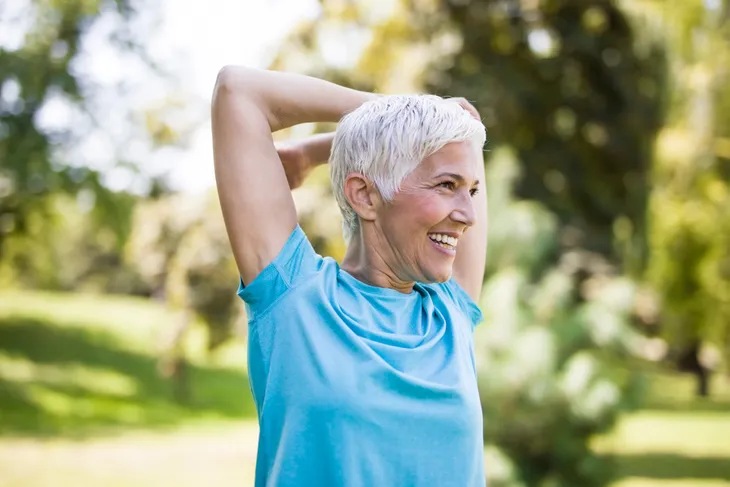Stretching is usually the afterthought of exercise. For most people, they’ll finish a hard workout and if there’s enough time and/or energy left, they’ll give their body the much needed stretch it deserves. In actuality, stretching should be something we do daily — with or without exercise! And especially in addition to exercise. Stretching is not an afterthought! We all need to stretch in order to stay mobile and independent.
“A lot of people don’t understand that stretching has to happen on a regular basis. It should be daily,” says David Nolan, a physical therapist at Harvard-affiliated Massachusetts General Hospital.
The Journal of Gerontology published a study which took the results of a stretch and flex program for seniors over the course of twelve months. Those who participated showed many positive changes in their lives, including physical fitness, function and ability to take care of themselves, as well as a significant decrease in pain, and improvement in their overall sense of wellbeing.
With that being said, let’s take a look at the reasons we should stretch daily, the benefits, and then finish off with a video of relaxing stretches to try!
Why Should Seniors Stretch Daily?
The biggest benefit of stretching is the most obvious. It improves movement in the joints and promotes flexibility. When we stretch, fluids are released in the joints to keep them moving and flexible. Also, the ability to remain flexible helps with everyday tasks, from bending over to put on shoes or putting a dish on a high shelf. An increase in range of motion is so important.
Stretching also releases muscle tension and soreness by lengthening tight muscles. This is why stretching is so important after a workout. Stretching can help prevent the muscles from pulling or tearing which can lead to injury. Any exertion “won’t put too much force on the muscle itself,” Nolan states. Going off that, stretching reduces the risk of injury by increasing flexibility and range of motion. Both of these will help decrease the risk of injuries that can occur when the body is unable to move a certain way.
Lastly, stretching improves posture. Poor posture is caused from many things, but the most common is the tightening of ligaments and tendons in the chest and shoulders.
Stretching Improves Posture, Promotes Independence
As we mentioned above, stretching improves posture. This is a big one for seniors because improved posture can also improve our balance and coordination which helps prevent falls. Each year, one out of ever three older adults will fall. Overall strengthening, as well as stretching of the hamstrings, quadriceps, calf muscles, ankles, hips, and the lower back will help combat against falls.
Stretching, particularly dynamic stretching, also improves circulation by improving blood flow. These stretches the ones not held for a time, but require movement in the body, which can be done seated. And lastly, all of these benefits combined, stretching can help seniors keep their independence. Staying independent is so important as we age, and being safe while independent is what will support aging in place.
With all of the benefits, you can see why it is so important to add stretches to your daily routine.
Relaxing Stretches for Seniors or Beginners
Now that we’ve covered all the benefits of stretching, why not give it a try?! In this video, we’ll go through an after workout stretch that can help loosen the body back up after any rigorous activity. It’s also a great routine for days where rest is needed, but we still have to get our stretching in to stay flexible and feel accomplished.
This stretching routine is great for seniors because it’s all seated which means therei routine is all seated so there is no excess strain on joints or muscles.
Remember to only do movements that you are comfortable with and never force and anything that causes pain or discomfort.
For more videos by Meredith, check out Senior Fitness with Meredith.





